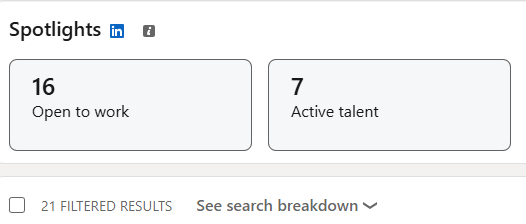Ok, you are in here clicking around and found my question. Put your challenges, questions, thoughts in the chat below. That way we can chat about it. I may even have an answer! ‘Cause here’s the thing, if you have a challenge or question I bet someone else does too! Help them out. 😉
🎯 What's your biggest challenge using Recruiter?
Do you dare to list it here? I hope so! Ready, set, go!










![Welcome [in] Forum|alt.badge.img](https://uploads-us-west-2.insided.com/linkedinlts-en/attachment/1d6a2c9d-8ed8-4726-8692-4f5ae7d186c6_thumb.png)